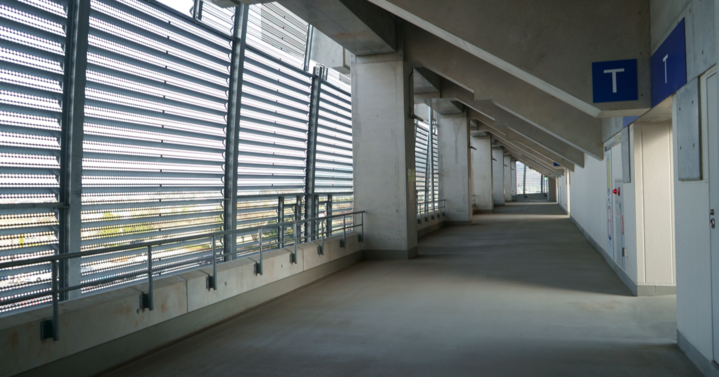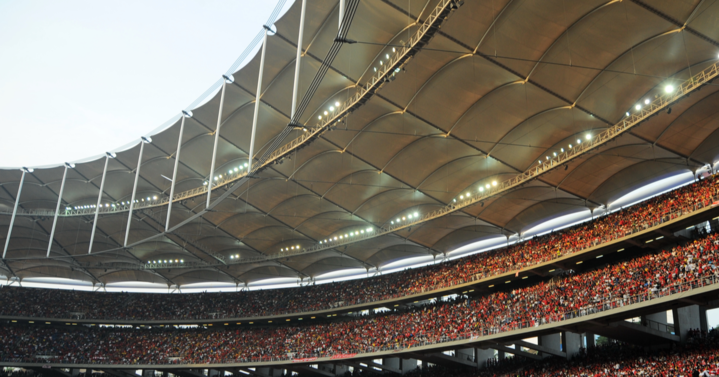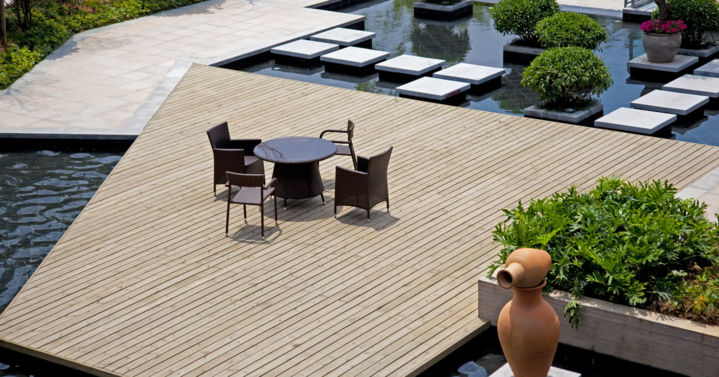Stadiums are structures used for sports and other events and feature many cement floors subjected to extreme wear and tear and exposure to climate fluctuations. With the constant flow of foot traffic of spectators, personnel, and athletes, stadiums are built to withstand the test of time with essential stadium maintenance.
However, problems can arise without proper reinforcement, repair of stadiums, correct installation, and routine maintenance. An article in The Dallas Morning News discusses an improperly installed $20 million stadium project in McKinney, Texas. It states that “the cracks are a combination of three factors. Too much water was added to the concrete mixture, which caused the concrete to shrink excessively as it dried. The cross-section along pier lines didn’t have enough concrete. And investigators said the area had insufficient steel reinforcing to control the cracking shrinkage.”
There are many causes of structure degradation, and there are also many ways to prevent these issues. Understanding the technicalities of concrete, reinforcements, and waterproofing is vital to the longevity of a stadium structure.
What Causes Stadium Structural Degradation
Many factors can cause rapid degradation of stadium structures, especially when subjected to heavy foot traffic and constant exposure to the elements. These spaces can be damaged easily by a lack of routine maintenance, proper waterproofing, and incorrect concrete repair.
Exposure to climate changes and moisture means that proper waterproofing is a must. Without adequate waterproofing, water can seep through cracks in concrete and cause extensive damage to all structure parts.
Another major contributing factor to stadium structure degradation is the failure to maintain proper pH levels in the concrete mixture. Without the appropriate pH levels, concrete will lose its binding characteristics, causing it to break down. This will increase the number of cracks and fractures in the concrete, speeding up deterioration and creating potentially major issues.
Early diagnosis of issues and careful attention to stadium waterproofing will help reduce your costs and time by avoiding expensive repairs of the stadiums or replacement.
Why Routine Care Is Essential in Sports Stadiums
Maintenance should always be proactive, not reactive. Implementing routine stadium care will increase the longevity of the stadium structure.
Stadiums face constant exposure to extreme weather conditions and heavy traffic. The freeze-thaw cycle can cause extensive damage to concrete. If not waterproofed correctly and inspected regularly, water will seep into the pores and cracks in the structure. Cracks will grow with the constant exposure to the freeze-thaw cycle; therefore, routine care is vital.
With stadium structures come heavy foot traffic as thousands of spectators and employees use the facility. Stadium owners or managers should implement preventative care and stadium maintenance to keep visitors safe while on-site. Installing steel reinforcements creates stability. However, if exposed to the elements or neglected, these reinforcements can cause significant damage.
How to Eliminate Structural Flaws With Quality Concrete Waterproofing in Stadiums
Waterproofing can remedy many structural flaws in a stadium’s structure. Stadium waterproofing prevents exposure to moisture and other elements and protects everything beneath them. Without appropriate waterproofing, corrosion and structural damages will occur eventually. Below are some maintenance tips to eliminate the repair of stadium structural flaws.
- Use waterproof stadium coating – This is used for heavy traffic areas and creates a non-slip surface.
- Ensure proper installation – Improper installation of stadium waterproofing components will lead to structural issues.
- Check for corrosion of steel reinforcements – Signs of deterioration can indicate improperly sealed concrete that won’t deter unwanted moisture.
- Regularly check for visible signs of substantial damage – Cracks and spalling can be a warning sign of more extensive damage. If there is any indication of either, address the issue immediately to prevent further damage.
- Ensure proper waterproof components – Choosing the correct caulking and sealants is critical when repairing concrete.
Enhance the Longevity of Your Stadium by Partnering With The JOBS Group
Stadium structures consist of several components subjected to extensive wear and tear climate changes. They are designed to withstand these elements. However, structural deterioration can be a real threat without knowing the ins and outs of concrete, reinforcements, and waterproofing. Take the guesswork out of your stadium’s longevity and partner with The A1Orange Group today!








